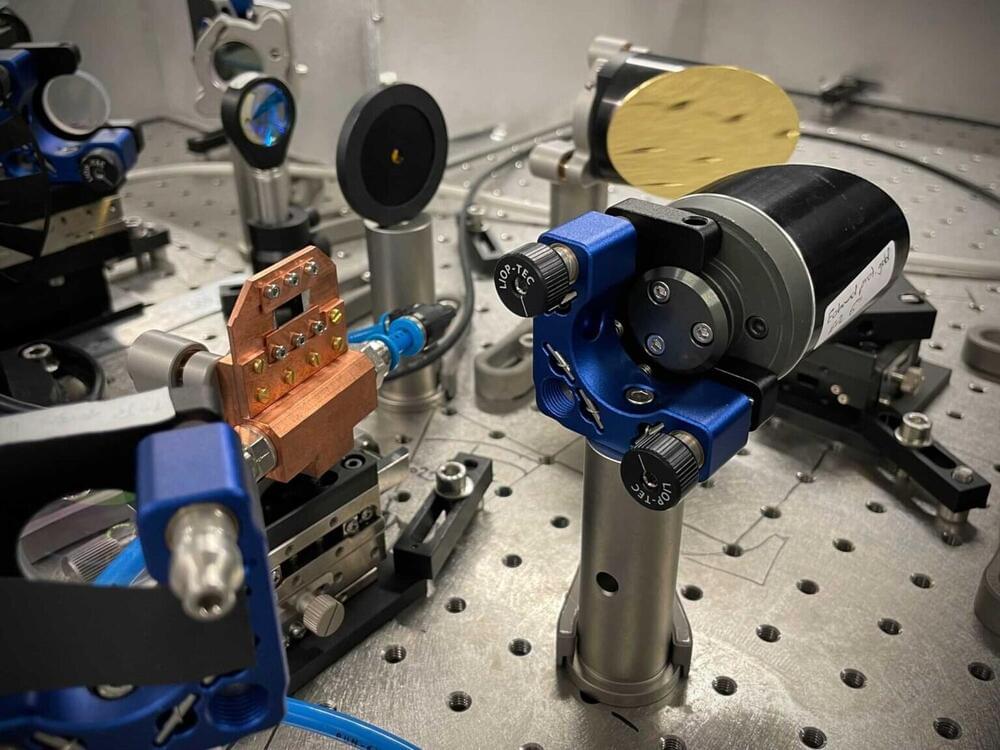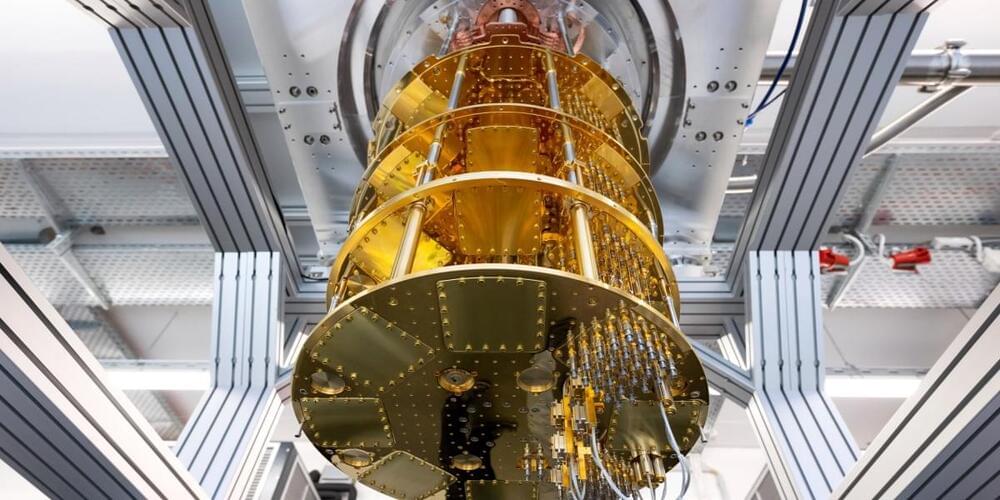A team of physicists has entangled three photons over a considerable distance, which could lead to more powerful quantum cryptography.



A laser pulse that sidesteps the inherent symmetry of light waves could manipulate quantum information, potentially bringing us closer to room temperature quantum computing.
The study, led by researchers at the University of Regensburg and the University of Michigan, could also accelerate conventional computing.
Quantum computing has the potential to accelerate solutions to problems that need to explore many variables at the same time, including drug discovery, weather prediction and encryption for cybersecurity. Conventional computer bits encode either a 1 or 0, but quantum bits, or qubits, can encode both at the same time. This essentially enables quantum computers to work through multiple scenarios simultaneously, rather than exploring them one after the other. However, these mixed states don’t last long, so the information processing must be faster than electronic circuits can muster.

The 2022 Nobel Prize in Physics honors research on the foundations of quantum mechanics, which opened up the quantum information frontier.
7 October 2022: We have replaced our initial one-paragraph announcement with a full-length Focus story.
The Nobel Prize in Physics this year recognizes efforts to take quantum weirdness out of philosophy discussions and to place it on experimental display for all to see. The award is shared by Alain Aspect, John Clauser, and Anton Zeilinger, all of whom showed a mastery of entanglement—a quantum relationship between two particles that can exist over long distances. Using entangled photons, Clauser and Aspect performed some of the first “Bell tests,” which confirmed quantum mechanics predictions while putting to bed certain alternative theories based on classical physics. Zeilinger used some of those Bell-test techniques to demonstrate entanglement control methods that can be applied to quantum computing, quantum cryptography, and other quantum information technologies.

Avast has released a decryptor for variants of the Hades ransomware known as ‘MafiaWare666’, ‘Jcrypt’, ‘RIP Lmao’, and ‘BrutusptCrypt,’ allowing victims to recover their files for free.
The security company says it discovered a flaw in the encryption scheme of the Hades strain, allowing some of the variants to be unlocked. However, this may not apply to newer or unknown samples that use a different encryption system.
Utilizing Avast’s tool, victims of the supported ransomware variants can decrypt and access their files again without paying a ransom to the attackers, which ranges between $50 and $300. However, ransom demands reached tens of thousands in some cases.
The rise of quantum computing and its implications for current encryption standards are well known. But why exactly should quantum computers be especially adept at breaking encryption? The answer is a nifty bit of mathematical juggling called Shor’s algorithm. The question that still leaves is: What is it that this algorithm does that causes quantum computers to be so much better at cracking encryption? In this video, YouTuber minutephysics explains it in his traditional whiteboard cartoon style.
“Quantum computation has the potential to make it super, super easy to access encrypted data — like having a lightsaber you can use to cut through any lock or barrier, no matter how strong,” minutephysics says. “Shor’s algorithm is that lightsaber.”
According to the video, Shor’s algorithm works off the understanding that for any pair of numbers, eventually multiplying one of them by itself will reach a factor of the other number plus or minus 1. Thus you take a guess at the first number and factor it out, adding and subtracting 1, until you arrive at the second number. That would unlock the encryption (specifically RSA here, but it works on some other types) because we would then have both factors.

Researchers have developed a metasurface device that can display three types of images depending on the illumination light. The three-channel device could be used as an anticounterfeiting measure or offer a new way to securely deliver encrypted information.
“Metasurfaces are artificial materials with tiny nanostructures that can be used to manipulate light,” said research team member Qi Dai from Wuhan University in China. “In this work, we exploited both the size and orientation of the nanostructures to design a metasurface with three working modes.”
The researchers describe the new device in Optics Express. They also showed that depending on the light used, the metasurface would generate a holographic image or a structural-color nanoprinting image with or without polarization-dependent watermarks.

By helping scientists control a strange but useful phenomenon of quantum mechanics, an ultrathin invention could make future computing, sensing, and encryption technologies remarkably smaller and more powerful. The device is described in new research that was recently published in the journal Science.
This device could replace a roomful of equipment to link photons in a bizarre quantum effect called entanglement, according to scientists at Sandia National Laboratories and the Max Planck Institute for the Science of Light. It is a kind of nano-engineered material called a metasurface and paves the way for entangling photons in complex ways that have not been possible with compact technologies.
When photons are said to be entangled, it means they are linked in such a way that actions on one affect the other, no matter where or how far apart the photons are in the universe. It is a spooky effect of quantum mechanics, the laws of physics that govern particles and other very tiny things.
Ralph C. Merkle is a computer scientist. He is one of the inventors of public key cryptography, the inventor of cryptographic hashing, and more recently a researcher and speaker of cryonics.
Videos in the talk: David Eagleman https://www.youtube.com/watch?v=-5tZtYns6kE molecular nanotechnology: https://www.youtube.com/watch?v=zqyZ9bFl_qg.
Filmed 2017/04/30


A phenomenon that often accompanies technological innovations involves how they tend to become smaller with their improvement over time. From televisions and communication devices like telephones to computers and microchip components, many of the technologies we use every day occupy a fraction of the space in our homes and offices that their predecessors did just decades ago.
In keeping with this trend, it is no surprise that a new tech developed by scientists at Sandia National Laboratories, in cooperation with the Max Planck Institute for the Science of Light, may soon replace cumbersome technologies than once required an entire room to operate, thanks to an ultrathin invention that could change the future of computation, encryption, and a host of other technologies.
At the heart of the invention and its function is a peculiar phenomenon that has perplexed physicists for decades, known as quantum entanglement.